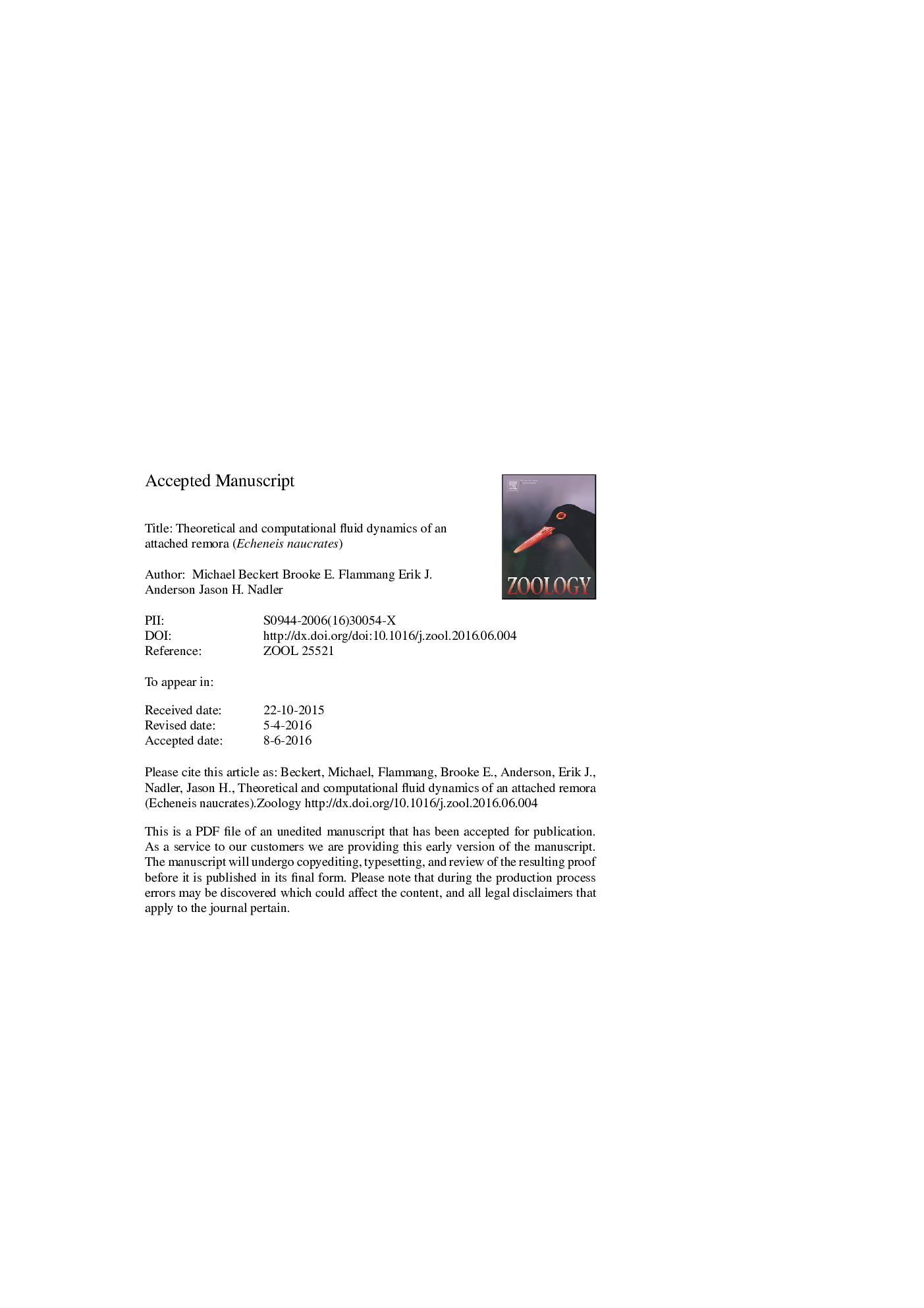| Article ID | Journal | Published Year | Pages | File Type |
|---|---|---|---|---|
| 5586575 | Zoology | 2016 | 32 Pages |
Abstract
Remora fishes have a unique dorsal suction pad that allows them to form robust, reliable, and reversible attachment to a wide variety of host organisms and marine vessels. Although investigations of the suction pad have been performed, the primary force that remoras must resist, namely fluid drag, has received little attention. This work provides a theoretical estimate of the drag experienced by an attached remora using computational fluid dynamics informed by geometry obtained from micro-computed tomography. Here, simulated flows are compared to measured flow fields of a euthanized specimen in a flow tank. Additionally, the influence of the host's boundary layer is investigated, and scaling relationships between remora features are inferred from the digitized geometry. The results suggest the drag on an attached remora is similar to that of a streamlined body, and is minimally influenced by the host's viscous boundary layer. Consequently, this evidence does not support the hypothesis that remoras discriminate between attachment locations based on hydrodynamic considerations. Comparison of the simulated drag with experimental friction tests show that even at elevated swimming speeds it is unlikely that remoras are dislodged by drag alone, and furthermore that larger remoras may be more difficult to dislodge than smaller remoras indicating that they become more suited to attachment as they mature.
Related Topics
Life Sciences
Agricultural and Biological Sciences
Animal Science and Zoology
Authors
Michael Beckert, Brooke E. Flammang, Erik J. Anderson, Jason H. Nadler,
